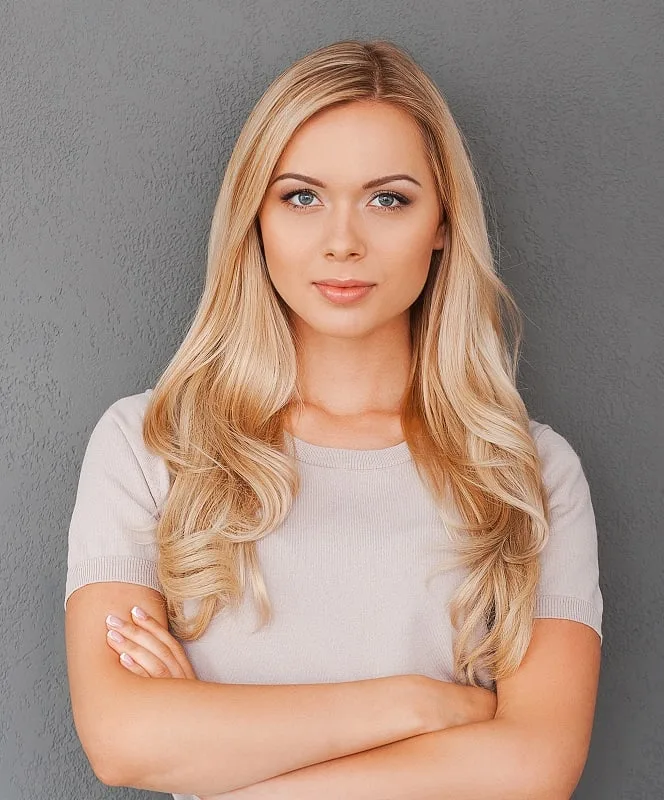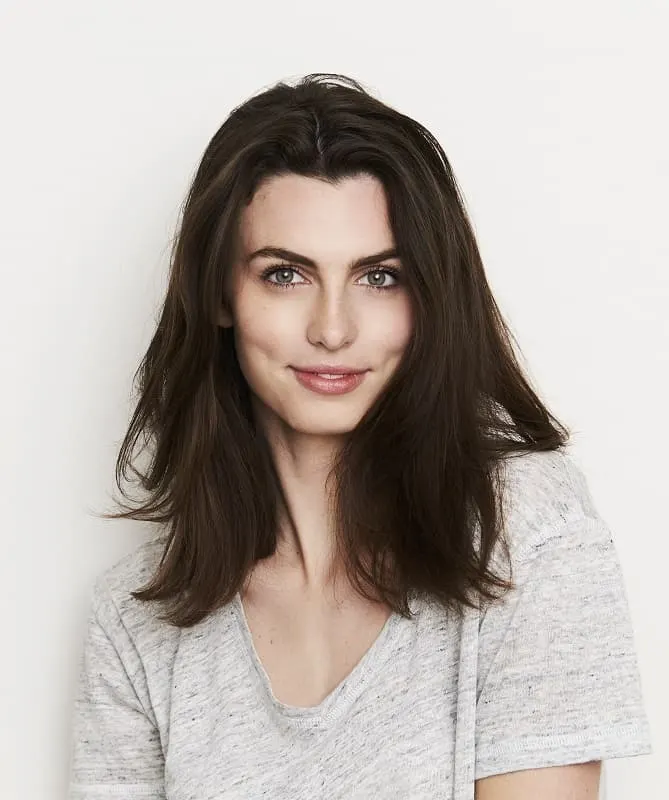Blonde vs. brunette is one of the most common decisions when considering which natural hair color to wear. Many people stick to narrow hair color choices between blonde or brunette from celebrities when going to the salon. However, there are many shades and variations in between.
Blonde vs. Brunette: The Similarities and Differences

Whether you choose a pale platinum blonde or deep chestnut brown, there’s a significant difference between blonde and brunette, as well as some similarities.
Eumelanin is a pigment that is present in both blonde and brown shades of hair. This pigment is a type of melanin prominent in brown, brunette or black hair shades, though traces are also found in blonde.
In some types of brown or blonde hair that include traces of red, copper, or auburn, you’ll find pheomelanin, a pigment that’s lighter and commonly found in red hair. These pigments and other types of melanin vary depending on how dark, red, or light the shade of brown or blonde hair is.
Darker shades of blonde and lighter browns tend to appear similar and often work well with a range of highlights or tones to combine blonde and brown tones. Some shades of brown naturally lighten under the sun, while some shades of blonde may naturally darken over time, depending on the individual.
Blonde Hair

Blonde is a bright and vibrant hair color that attracts a lot of attention. People generally find natural blonde hair sexy, fun, and popular.
The Benefits
There are some great reasons why choosing blonde can work for you:
- Lighter hair color tends to make you look younger.
- It’s an easy shade to care for if you need dry shampoo, such as talcum powder, which isn’t as effective with darker hair colors.
- Blonde is seen as glamorous and optimistic.
- It’s a compatible shade with any style or color of clothing, makeup, and accessories.
Some studies indicate that people generally treat blondes better, partially due to stereotypes about individuals with blonde hair or portrayed in the media, film, and television.
You’ll find a wide range of blonde shades, from gold and honey-toned blondes with a high gloss or shine. Pale and platinum blondes are famous around the world, offering that sun-kissed look.
Darker shades of blonde are also popular and often worn with lighter blonde highlights to create a more natural look. Overall, blonde is considered the hair color that lifts mood and promotes a more free-spirited, fun appearance that many people find welcoming and approachable.
Are There Drawbacks to Going Blonde?
If you’re going from dark brown or black to blonde, you’ll need to use many lighteners, which can cause dryness and damage to hair.
Darker roots tend to show up quickly, requiring touch-ups to maintain a sleek and even-toned blonde. A very light shade of blonde can be high maintenance for this reason and cost more at a professional salon to treat and condition.
Brunette

Brown hair shines impressively in sunlight, and you can add a lot of variations to your brunette mane, from a hint of auburn using a temporary rinse. You can also add a contrasting chunk or highlights of lighter and darker shades of brown, similar to how shades of blonde can create a dimensional look.
The Advantages
Something is charming and alluring about a deep shade of chestnut or deep chocolate brown hair. One of the top advantages is low maintenance because shades of brown don’t require bleach or lightning products, which means there’s less chance of damage.
- Dark hair tends to be thicker and shinier, which works wonderfully with various hairstyles, from long layers and bobs to shorter crops and pixies.
- People tend to view brunettes as intelligent, sophisticated, and intelligent.
- There are many shades of brown to choose from, and brunettes generally suit all shades of makeup and clothing colors and styles.
- Darker hair colors tend to accentuate facial bone structure, eye shape, and color.
Another significant benefit of embracing a shade of chestnut is how well darker hair masks split ends and damage. Going one or two shades darker can quickly appear to “repair” a bad dye job or adequately cover a botched hair treatment, usually caused by over-processing with hair bleach or incorrectly mixing dyes.
The Cons of Going Darker
Going brunette offers many great options, from natural tints to permanent dyes. However, some products can stain easily and may be difficult to remove or lighten if they do not offer the desired result.
While lighter shades of brown are easy to work with, darker brunettes closer to black can be difficult to remove and can make some people look older or harsh in appearance.
While there are often concerns about possible health and cancer links between prolonged use of hair dye and cosmetics, especially significantly darker hair color treatments, it’s also important to note that many study results are inconclusive. Some people may avoid darker hair dyes because of this myth. However, over half of the women use dyes regularly, and many do not experience significant side effects.
Wrapping Up
Choosing blonde or brunette for your hair color largely depends on personal preference and the image you want to present. You’ll also want to consider how various shades of brown and blonde will complement your complexion, eye color, style of clothing, and other factors.
Darker shades of brown and ash blonde colors offer cool tones that complement specific complexions and makeup palettes, whereas golden blonde or brunettes add warmth to your look. If you want a bit of dimension to your shade choice, consider strawberry blonde, reddish-brown, or ash tones to increase your color’s warm and cool tones.
Going blonde or brunette offers many shades in between the two choices, and switching to a new look is effortless if you’re feeling adventurous and need a quick change. You’ll also find a lot of great quality products, from temporary rinses and semi-permanent dyes to permanent color.
